Monday, 14 April 2003, 3:17 pm
Column: Catherine Austin Fitts
Mapping the Real Deal…
The Real Deal About Enron
… an interview with Scoop Real Deal Columnist Catherine Austin Fitts
Part Five Of Seven Parts
By Daniel Armstrong*
Originally Published By Sanders Research Associates
[*Daniel Armstrong is a writer and novelist based in Eugene, Oregon. Mr. Armstrong is a graduate of Princeton University and attended the University of Oregon School of Journalism.]
If my years working on the clean up of BCCI and the S&L crisis taught me one thing that I would communicate today to the shareholders, retirees and employees who have been harmed, it is this: people like those on the board of Enron absolutely make money from insider trading, bid rigging and fraud, and they do so with help from the highest levels.
— Catherine Austin Fitts.
IMAGE: Enron – Click Through To Original Article
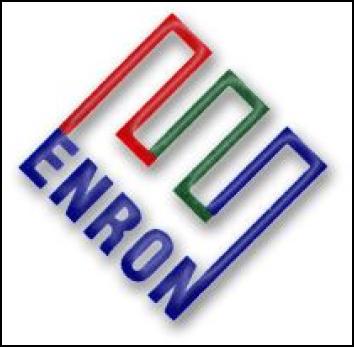
*************************
(Click Here for Part One)
(Click Here for Part Two)
(Click Here for Part Three)
(Click Here for Part Four)
(Click Here for Part Five)
In Part One, we introduced Catherine Austin Fitts and described some of her experiences in taking on the criminal powers who lie behind the modern U.S. Governmental apparatus. The Interview transcript follows in
Part Two , Part Three and Part Four )
*************************
IMAGE: All Road’s Lead To Enron – Click To Enlarge
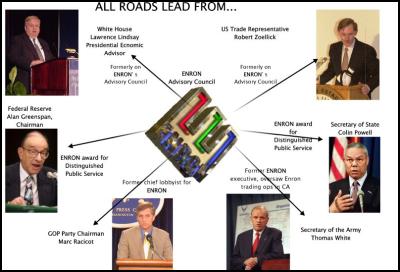
Graphic: J. Ward
DA: While, in the case of Hamilton, you experienced the Clinton Administration DOJ acting to this very purpose—canceling contracts and seizing monies. In fact, HUD still owes you somewhere between two and three million dollars for work completed on contracts you had with them.
CAF: The Hamilton case proves indisputably that when there is a will, federal investigators can quickly and aggressively assert control over records of an investigative target. They can do so even when their own investigators take the position that there was no wrongdoing. They can do so when they have strong assurances as to subpoena compliance and protection of documents, and they know that their combined actions will shut down the company, smear the reputations of its founders, management, and investors and cause employees to lose their jobs and the value of their company stock.
DA: But the DOJ dropped their investigation of Hamilton, and you were proven innocent of the allegations made by Ervin & Associates. How in the world did you win your battle?
CAF: There were many reasons. I think the principle reason was the extraordinary support of literally hundreds of decent men and women throughout government and among the many people who had worked with me and the people who stayed on to help. This group tried to do the right thing or to support us in whatever ways they could—as did my family and friends. We did not have the support of the rich and powerful, but we had the support of the “little people.” When the little people work together, we are far more powerful than we know. As the support of the “little people” allowed the truth to come out, numerous former colleagues and associates returned to support after they realized that very prestigious and powerful sources had misled or lied to them. There is an old saying, “truth comes together and lies fall apart.” That is what happened. The full story of our success is a story of miracles, big and small. I believe that our freedom comes to us from divine authority, and my story provides a concrete example. One of the miracles was that our attorneys included a few fighting Irishmen who stuck with it when the going got tough.
DA: Are you still hounded by the DOJ?
CAF: Managing the liquidation of Hamilton remains a full time job.
DA: What do you mean?
CAF: The DOJ has not moved to dismiss the qui tam against us, nor, as you mentioned, have we been paid monies owed Hamilton. We are in litigation between Hamilton, DOJ and Ervin & Associates with two cases in disco very now and scheduled for trial next September and one case not yet scheduled despite years of effort. I think the absence of any DOJ action to pay us versus generous settlements and sole source contracts unnecessarily awarded to Ervin speak for themselves. I anticipate I will spend years in litigation defending Hamilton against Ervin and holding both Ervin & Associates and John Ervin personally accountable and collecting monies owed by the government to Hamilton over DOJ’s opposition. My estimate is that the federal enforcement establishment may have spent more to target me over the last six years in this litigation then they spent to get Bin Laden before September 11th. The fact that they have provided generous inside deals to Ervin who helped drive honest people out of government and ensure that billions were lost by government is particularly disturbing.
The following cartoons are from SRA’s daily `Mr. Global’ strip

DA: What does this mean to you? That is, compare the treatment you received and the treatment presently being given to Enron? CAF: Congress did all this screaming and ranting and raving that really makes it seem like they are doing something significant. Now what’s happening? I’m sitting there, watching this unfold—then nothing. As far as I’m concerned, it’s “deja vu all over again.” They are covering Enron up, exactly the way they covered up the S&L stuff, which was a very similar situation. It was a bunch of guys from Houston and New York Fed member banks and Wall Street who got together and stole a couple of hundred billion dollars. It is the same private syndicate—so here we go again—and Congress is playing the same cover-up game, again. So, basically, the comparison becomes an out and out contradiction of values. Hamilton was wrongly accused and its assets were destroyed. Enron is getting kid-glove treatment, while the stolen money is getting away.
DA: Okay, Catherine, you’ve laid out your argument. You’ve seen this from the inside. You’ve seen this from the outside. At the very least, the congressional investigation has been lax, inefficient, and disturbingly slow. Mistakes and omission have occurred. But you keep calling it a cover-up. You’ve said Enron management provided the fall guys and that the big winners are really outside the company, the second and third party Enron investors and banks that were able to get huge sums of money out before the collapse. These are the real inside traders. You’ve also mentioned Enron and the S&L crisis in the same breath as though Enron was to some extent an intentional play from the outside—not just endemic greed in a few members of Enron management. You’ve even suggested that some of the same players were involved across the span of the S&L fraud, BCCI/IranContra, and Enron. I struggle here. I think most of us want to reject this idea of systemic syndicated crime—especially at the level you’re talking. But you are one of the few people in the entire world, who has seen all of this up close as an inside investigator. Now, it could be said, that because of what the DOJ and HUD did to you, you’re just slinging mud at the U.S. government and certain HUD contractors. From talking to you many times over several months, I have to say, however, I don’t get that feeling from you at all. This is simply my opinion. In the end, I don’t like what you’re telling me, but your argument is compelling. So let’s have it. You mentioned a “bunch of guys from Houston and the New York Fed and Wall Street.” Clarify this as best you can. Who or what’s at the bottom of Enron? In your opinion, what is the Real Deal?
CAF: My recommendation is to start by studying Herbert “Pug” Winokur, who, I mentioned earlier, chaired the finance committee of Enron’s board. He is the top guy responsible on the board to know how the money works and to make sure it is working in the way that it is supposed to. Pug was a member of the Powers investigation, the committee set up to investigate the financial operation that Pug himself oversaw.
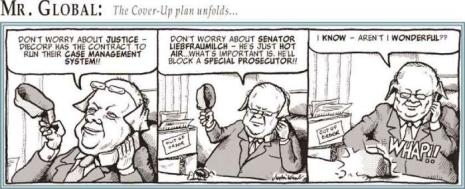
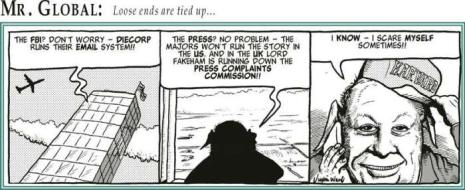
He was a board member of Harvard, overseeing the Harvard Endowment that invested heavily in Enron, as well as a co investor active with Harvard. He is also on the board as the former Chairman, lead outside investor and cur rent Chairman of the Compensation Committee of DynCorp. It is important to ask the question as to why our congressman and senators, when they have had Winokur in front of them and he was saying yahyah, they let him get away with it?
DA: I heard your comments on Winokur in your interview with KPFA’s Dennis Bernstein. The DynCorp connection is big. With DynCorp providing information via PROMIS to the DOJ—including the US Attorney’s offices, the FBI, and the SEC, Winokur, presumably, has access to huge amounts of information, including banking records and email, for all the members of Congress. The suggestion here is he’s the twentyfirst century J. Edgar Hoover. Everyone is afraid of him.
CAF: Bingo! In later testimony, Winokur asserted ignorance of how Enron’s trading strategies were generating so much profit on the California energy crisis. Winokur never mentioned that as Finance Chairman he was required by the dictates of board responsibilities—and the handsome sum of money he is paid–to understand where significant profits are coming from. He also failed to mention that he has a PHD from Harvard in math specializing in complex systems theories, so the implication that this stuff was all too complicated for him and he can’t be bothered to understand it is another dog that won’t hunt.
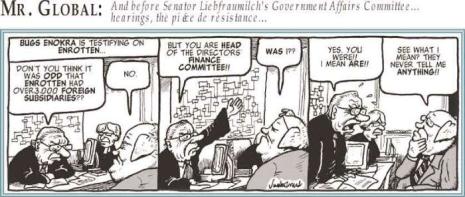
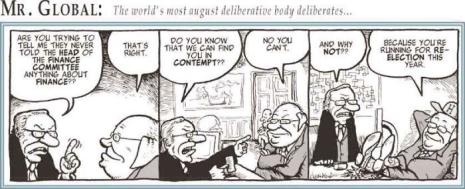
DA: I saw a letter on the Internet to William Powers from Congressmen John Dingell and Peter Deutsch dated February 2, 2002. They are not blind to this. They do question Powers about Winokur:
As a member of the special committee now responsible for investigating the related party transactions between Enron and the LJM1/LJM2 and other related partnerships, Mr. Winokur is essentially investigating his own actions and approving or disapproving the resulting report. You can understand why disinterested observers might conclude that the report’s independence, or at least the appearance of independence, has been compromised. [16]
And yet, Winokur was not taken off Power’s committee.
CAF: And throughout his testimony before Congress he pleaded ignorance of everything—and for the most part received only puffball questions.
DA: In another excerpt from this same letter, Dingell and Deutsch clearly place Winokur in the mix with Michael Kopper and Andrew Fastow:
Today’s Wall Street Journal (Feb. 2) reported that Mr. Winokur was also a member of Enron’s executive committee that approved the financial structure of CHEWCO, an allegedly independent entity which would be run by Michael Koppers, an Enron executive. The consolidation of CHEWCO’s debt onto Enron’s balance sheet in 2001, due to the fact that it was actually an affiliated entity, was one of the reasons Enron had to write down $1.2 billion in equity last October. [17]
IMAGE: Jerry Hawke And Friend
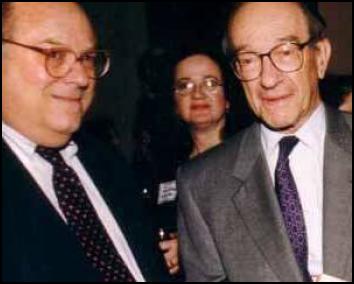
It is curious that Mr. Winokur has received so little attention in the mainstream press. His name is virtually never mentioned anymore.
CAF: Pug is a key player, but ultimately he is simply a member of a syndicate that works together to make money. Financial fraud—including insidertrading—is the most profitable business on the planet. A fraud of this magnitude can buy a lot of cooperation in any market. Perhaps we will come to learn more about the syndicate as more links are discovered between Enron, Tyco, Imclone, Global Crossing, WorldCom, and other failed giants. Another player who is worth studying is Jerry Hawke, the leading US bank regulator. He worked for Robert Rubin as Jerry Hawke and friend Secretary of Treasury, now, as we mentioned, cochair of Citibank and a member of the Harvard Corporation. He also worked for Larry Summers, Rubin’s successor at the Treasury, who is now President of Harvard. Jerry Hawke was promoted to Comptroller of the Currency in 1998, which is the lead regulator permitting all this offshore bank fraud to occur uninterrupted by government regulation. But having Winokur on the Power’s Committee was like putting the fox in on the early investigation— just in time to review all the most damning materials and the most damning employee testimony. It’s possible for a process like this to organize the critical information necessary to perform the right “surgery” on Enron’s institutional memory so that the cover up design works. For example, this stuff gets shredded, this witness dies mysteriously.
***********************
In Part Six we learn about “Standard Operating Procedure” for DOJ frame-ups, and are introduced to the motherload of corporate malfeasance, $Billions missing at HUD and $3.3 trillion dollars missing at the Department of Defense.
***********************
Catherine Austin Fitts is the President of Solari, Inc. ( http://solari.com) and a former Assistant Secretary of Housing – Federal Housing Commissioner in Bush I. She is currently litigating with Ervin and Associates (acting on behalf of the government ) and the Department of Housing and Urban Development. If you would like to support her litigation efforts, you can through Affero/ Venture Collective: http://www.solari.com/vote.php
If this “Mapping the Real Deal” was useful for you, you can leave comments and send a gift to Catherine Austin Fitts and Scoop Media through Affer: http://svcs.affero.net/rm.php?skid=sp0
and receive future columns for free by e-mail – see… Free My Scoop to sign up.
©opyright Daniel Armstrong, March 2003
